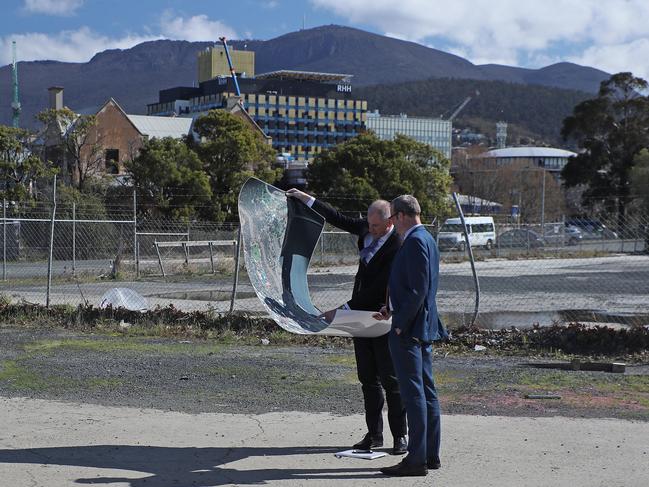Macquarie Point — the hazards that lie beneath
MARY MASSINA: CBD’s main sewer line, oil and diesel pipelines among the hurdles

Opinion
Don't miss out on the headlines from Opinion. Followed categories will be added to My News.
AS with all things, sometimes looks can be deceiving.
When we take the time to look up and marvel at grand buildings and architectural feats, we often neglect the work, effort and care taken to establish what is considered the most important aspect of a building — its foundations.
The foundations hold everything together and without getting that right we might never get a building off the ground.
From an outsider’s perspective or as one who hasn’t been thoroughly involved with the Macquarie Point project, you might be forgiven for thinking not much has been done on site.
It may look this way, but under the surface lies complexities that must be considered before taking even the first step to construction.
Since the 1850s, Mac Point has had an industrial history which has been rich and varied; once used as drill halls for the army, an abattoir, a general dump, gas works and then finally becoming the home of Hobart’s rail yards.
And we know that best practice wasn’t always considered in the early years of settlement.
These uses have contributed to the many issues and hazards that lie beneath, and understanding the complex nature of how to deal with these issues has been a task the Macquarie Point Development Corporation takes with utmost responsibility.
Since the reset of the development in late 2016, which required the corporation to begin again from scratch, we have been focused on issues such as title, planning rule requirements, legislation, remediation, infrastructure, geotechnical requirements and the site’s legacy issues.
The Macquarie Point Development Corporation Act 2012 puts in place a higher level of remediation than any other site in Tasmania, with a requirement for sign-off by the Environmental Auditor.
The process of remediating the 9.3 hectare site is complex, with many constraints. A large part of understanding the site was to firstly work out how groundwater travels across the land to make sure we knew how it was to be cleaned, analysing whether any diesel spills created an ecological hazard by leaching into the groundwater.
More than 400 bore holes have been dug across the site and neighbouring areas to ensure there is a rigorous understanding of how water travels underground.
Understanding and analysis of where contaminants were buried on site required the soil to be stockpiled, ahead of testing and removal.
Redundant infrastructure is littered across the site, such as the old diesel and oil pipelines, water and storm water pipes, the electricity cabling and the easements associated with the infrastructure.
The main sewer line for Hobart’s CBD runs through the site, posing problems that require well-informed solutions. And that’s what the corporation has been busy doing — working hard to achieve solutions.
In a Tasmanian and a Mac Point first, the Environmental Auditor has now signed off on the first parcel of land earmarked as the potential site of the Antarctic and Science Precinct.
Signing off on this first parcel of land should give all Tasmanians confidence that there is a rigorous and understood process that addresses the complexities of this site ahead of permanent development.
The corporation has received planning approval in July this year for the next large scale remediation task associated with the development parcel under the escarpment.
Further to this, the corporation has now submitted a $3 million development application to the Hobart City Council for further remediation work to clean up most of the site.
And with the planning rules soon to be gazetted, this step will finalise the planning scheme allowing for permanent infrastructure to be established on site and open up land for development.
This is a once in a lifetime opportunity to get the vision right for one of the state’s most prized locations, and work is well under way to achieve that vision.
This is an exciting time for Macquarie Point and the legacy we will leave will be one that is well considered, responsible and something to be enjoyed for generations to come.
Mary Massina is chief executive of the Macquarie Point Development Corporation.


